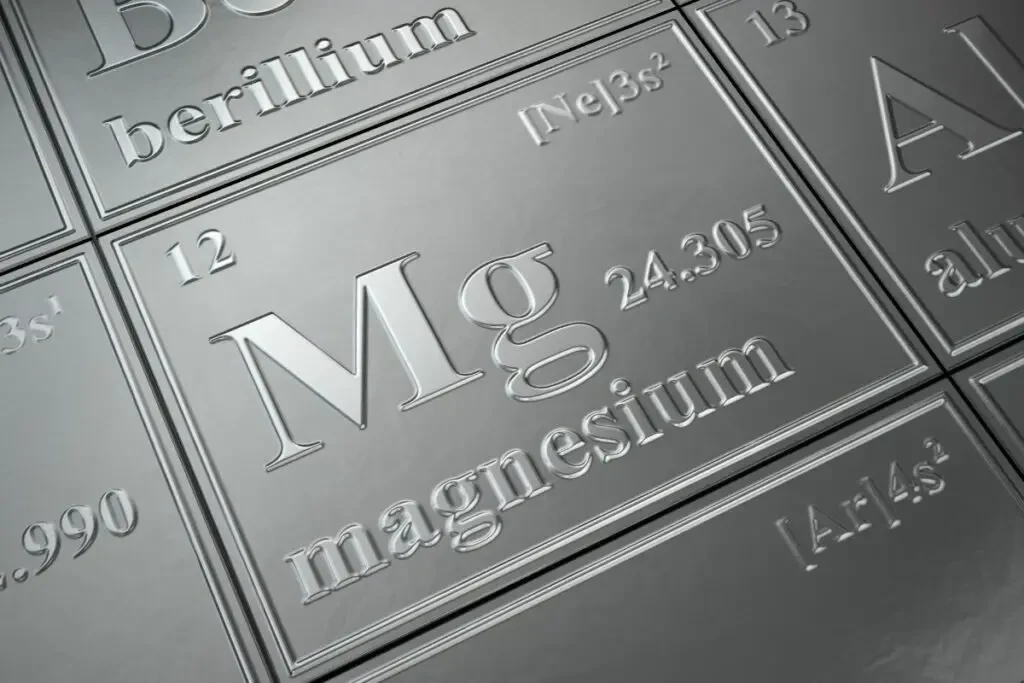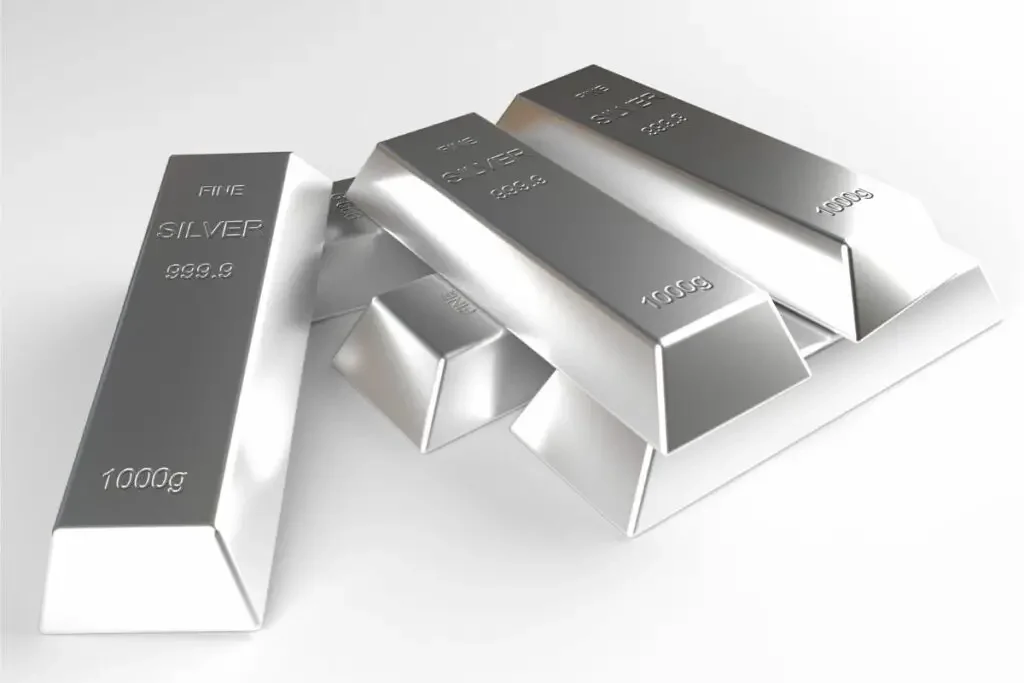As an Amazon Associate, we earn from qualifying purchases with no additional costs for you.
Would you believe that a well-made knife, hardened and tempered correctly, would be able to cut through a steel bar of, say, 3/8 inch in diameter? Fair enough, you won’t be slicing through the bar in one clean cut as you would a nice fat German sausage, but you will be able to use a hammer and bash the knife blade, thus cutting the steel rod in half. A simple rule to understand here is that a hard metal can be cut by a harder metal. That’s how cutting saws, tips, and tools used in engineering machine shops work.
Metals that are easily cut, even with a modestly sharp knife, are identified as 12 of the 14 elements in the S-Block of the Periodic table. The Metals listed in the S-Block category all have a low density with a correspondingly low melting point/boiling point and are exceptionally soft in their natural state.
There are several metal elements in existence on our planet that are very soft and can easily be cut with a knife. It is even possible to shave off fine slivers of these soft metals with a scalpel blade without raising a sweat. Digging deeper, we must now venture into the dark arts of chemistry.
These soft metals that can be cut with a knife fall into the category of group 1 (Alkali) and group 2 (Alkaline Earth) metals which fall into the S-Block of the Periodic Table. This table is a list, arranged in a tabulated form, of all the elements known to mankind.
The 12 metal elements listed in the S-block category, in order of appearance, are as follows: – Lithium (Li), sodium (Na), beryllium (Be), potassium (K), magnesium (Mg), rubidium (Rb), calcium (Ca), cesium (Cs), strontium (Sr), francium (Fr), barium (Ba), and radium (Ra). Hydrogen (H) and helium (He) are also listed in the S-block category, but they are gaseous, whereas the others are classified as metals.
The elements in group 1 (Alkali metals) are softer than group 2 (Alkaline Earth Metals). Both are shiny silvery white in color and are very good conductors of heat and electricity. Now a word of caution. Some of these elements, particularly those in group 1, react violently when exposed to water and/or air. They are exceptionally dangerous if mishandled.
Tip: If you are interested in checking out the best whetstones for sharpening your knives we recommend and use you can find them by clicking here (Amazon link).
What Metal Can You Cut With A Knife?
Low-density metals that have a low melting point are extremely soft and easily cut with a knife. High-density, high-hardness metals with high melting points, such as Iron and steel, are difficult or rather impossible to successfully cut with a knife.

The Earth metals, found in the S-Block of the periodic table, are very soft and easily cut with a knife. Alkali metals in group 1 of the S-Block are the softer metals and consist of Lithium, sodium, potassium, rubidium, cesium, and francium.
The group 2 metals, known as Alkaline Earth metals, consisting of beryllium, magnesium, calcium, strontium, barium, and radium, are slightly tougher but can still be cut with a knife.
Potassium
Potassium is an extremely soft metal with an exceptionally low density. It is the second least dense metal on the periodic chart, coming in straight after Lithium.
Because it is so soft, it is easily cut with a knife, probably no more difficult to cut than a nice firm cheddar cheese. Its low density makes it very light to the point where it will float on water.
Floating it on water, though, would be about the very last thing you would want to do. Potassium reacts violently and bursts into vigorous flames the moment it contacts water.
The chemical reaction when it hits the water is exothermic (produces heat), and at the same time, it produces hydrogen, which of course, is nice and flammable.
Our Earth’s outer shell consists of an estimated 2.4 % (by weight) of potassium which makes it the seventh most abundant metal on our planet. It is not surprising, though, that the potassium described above is not found in its natural state.
If it was, our Earth would have exploded long ago as soon as water arrived. Potassium is also reactive to moist air and must be stored in an oil that is air and moisture-free, such as kerosene.
Magnesium

Although very low in density but still considered a “soft” metal, magnesium is a tough element that is more difficult to cut with a knife than sodium or potassium.
It is easily machined when using the correct cutting tools and is a highly desirable metal where exceptional lightness, combined with acceptable tensile strength, is important.
Magnesium is a relatively stable element but can be easily ignited in air with an initiator. It burns with an intense bright white light and is used extensively in Illuminating flares, particularly in maritime and military applications. It is also used comprehensively in the manufacture of other pyrotechnics such as fireworks, sparklers, etc.
Although it is the eighth most abundant element on Earth, magnesium is not found in its raw state. It is prepared either by reducing magnesium oxide or by electrolysis of magnesium chloride.
Finally, magnesium is found throughout the human body and is a vital element in human health and in the existence of plant life.
TIP: Did you know that there are some items you should never cut with a serrated edge knife such as a bread knife? Read what NOT to cut with these knives in our article below!
What To Cut & NOT To Cut With A Bread (Serrated) Knife
Lithium
Lithium is one of those extremely soft, low-density Alkaline metals that can easily be cut with a knife, a scalpel blade, or even a pair of dressmaker’s scissors.
Arguably it is probably most well-known these days for its use in the manufacture of rechargeable lithium batteries. With the explosion of interest in electric vehicles (EVs), it may be of some concern to know that Lithium is only the 25th most abundant element on Earth.
Whilst being convenient and long-lasting, lithium-based batteries are potentially extremely dangerous. After repeated charging, dendrites are formed, and if there is a short circuit, it can trigger an explosion, and the battery bursts into flames.
Regarding fire, Lithium, like potassium, is an exceptionally light metal. So, light, in fact, that it too could float on water. But, just as with potassium, you don’t want to do that. When coming into contact with water, Lithium undergoes an exothermic reaction producing intense heat.
This produces lithium hydroxide along with our favorite flammable gas, hydrogen, and an exciting flaming finale follows. So again, be very aware it is highly dangerous.
Calcium
Calcium has a very low density and is the lightest of the alkali earth metals. Whilst it is harder than sodium, it is way softer than aluminum and can be cut with a knife. When cut, the exposed surface is bright silvery white in color, but this oxidizes rapidly to a dull gray-white finish.
Rated as the third most abundant metal on Earth, calcium has numerous uses, including being used in the production of alloys of magnesium, copper, beryllium, and aluminum.
Calcium also reacts with water, but not violently; it just produces bubbles of calcium hydroxide and hydrogen. In this case, because the reaction is not exothermic, calcium in water does not burst into flames.
PRO TIP: We personally use diamond plates by Atoma. They are quite expensive but of the top quality with very long service life.
The initial costs are higher but you have an option of buying replacing diamond skin for all Atoma plates. The costs of replacing diamond skin are much lower than the cost of buying a new diamond plate.
So if you are going to use diamond plates regularly and want to get the best quality on the market, check out the four Atoma diamond plates listed below (Amazon links).
- Atoma Diamond Sharpener Coarse Grade 140 Grit
- Atoma Diamond Sharpener Medium 400 Grit
- Atoma Diamond Sharpener Fine 600 Grit
- Atoma Diamond Sharpener Super Fine 1200 Grit
These 4 diamond sharpening stones are all you need to have for repairing or sharpening your knives.
Sodium
Sodium is an element similar to potassium in hardness. It is low in density, very soft, and very easily cut with a knife.
Making up some 2.6% of the Earth’s crust, it is the sixth most abundant element on our planet.
Over the millenniums, sodium chloride has leached out into our oceans, thus making our sea “salty.” Ancient dried-up ocean beds are valuable sources of our common salt, sodium chloride.
But sodium, as a metal element, is also extremely dangerous. Not only does it have a violent and often explosive reaction in water, but it will spontaneously burst into flames just by coming into contact with air. The only way to keep it under control is to store it in a moisture and oxygen-free oil such as kerosene.
TIP: A paring knife is a great utility knife in the kitchen, but there are certain items you should avoid cutting with this knife. Read our article below on what NOT to cut with a paring knife!
Explained: What To Cut & NOT To Cut With A Paring Knife
Silver

Though quite soft in its pure state, you are not going to cut a bar of silver with a knife. Silver is extremely ductile and malleable though not as much as gold. If presented in thin sheet form, it certainly could be cut using a knife or even a pair of scissors.
As a jewelry item, pure silver is considered a bit soft for practical use, so it is usually hardened by the addition of other metals, including copper. Sterling silver contains 92.5 % silver with 7.5% of added metals, making it more durable than pure silver.
Pure Iron
Nope, you are not going to cut through a chunk of pure Iron easily with a knife. Whilst it is considered “soft” at number 26 on the periodic chart, it would have to be rolled into a very thin sheet before you could cut it with a knife or, rather, tin snips.
As the 4th most abundant metal on Earth, Iron is not used commercially in its pure form. The addition of carbon and other elements transforms it into much harder materials such as cast Iron and steel.
What Are Good Knife Steels For Cutting Metals?
Just about any knife blade that is harder and tougher than the metal you intend to cut will work. But as already said, to chop your way through a steel bar, you would have to bash the knife through with a hammer or something equally heavy.
Frankly, that would be a bad way to test your knife. Probably, at best, you will ruin it forever; at worst, you could injure yourself in the process. Rather than research it on the net, don’t try it.
For cutting those softer metals in the S category of the periodic chart, you will, at the very least, need a knife blade that is harder and stronger than the metal you are addressing.
Metals like Gold and Iron are malleable but harder and denser than the softer alkaline metals and are more difficult to cut.
Conclusion
The likelihood of you ever wanting to cut metal with a knife is probably remote, but you would be well advised to exercise great caution in applying a blade to those highly reactive alkaline and alkaline earth materials.
TIP: Ceramic knives hold an edge extremely well, but there are certain items you should never cut with a ceramic knife. Read our article to find out what items you should avoid cutting with ceramic knives!
Explained: What To Cut & NOT To Cut With A Ceramic Knife
